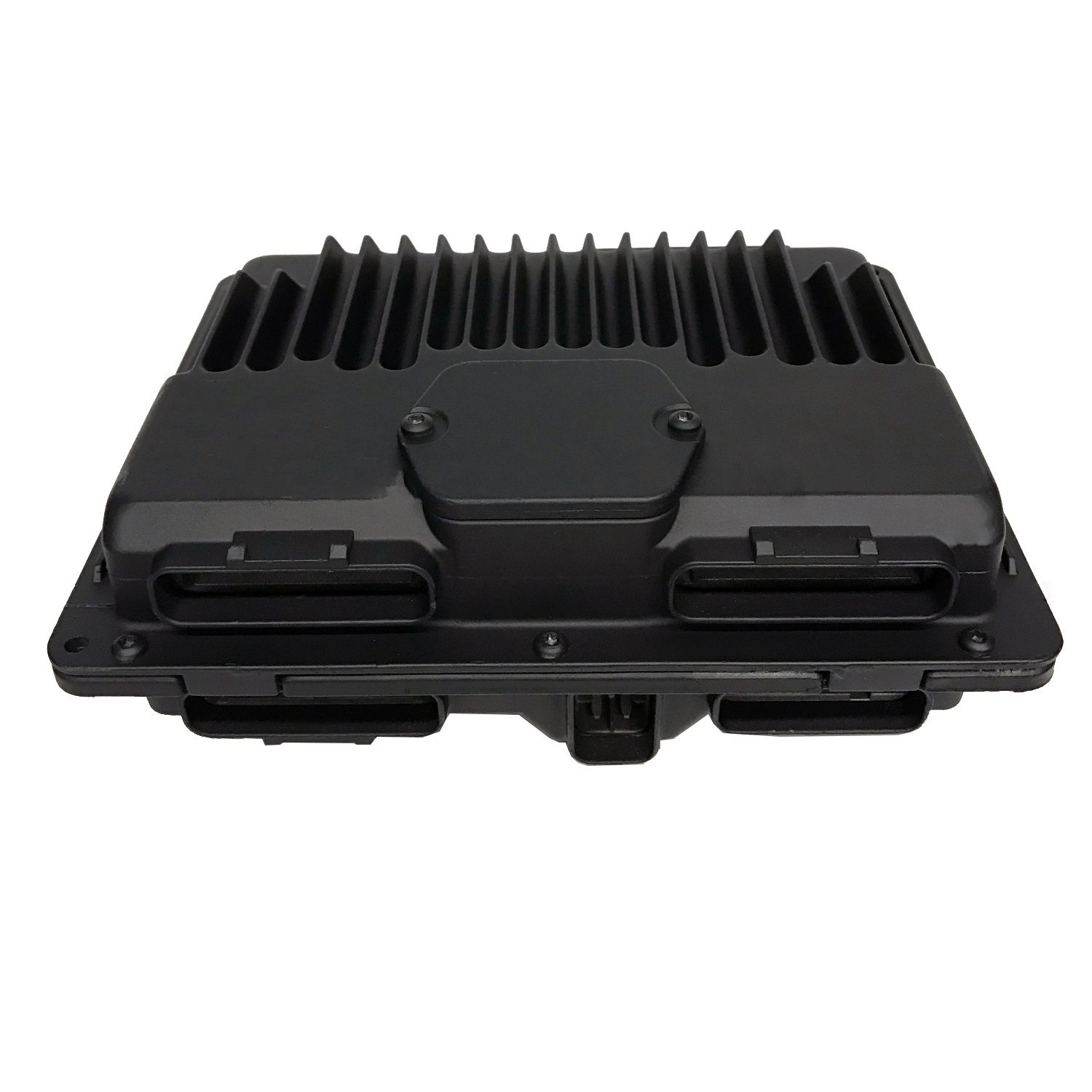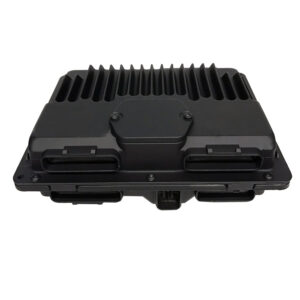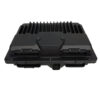Restore Peak Performance to Your GM Truck or SUV
If you’re dealing with frustrating issues like a persistent check engine light, stalling, rough idling, or poor fuel economy in your 1998-2000 Blazer S10/Jimmy S15, a failing Powertrain Control Module (PCM) is a very likely culprit. As the brain of your vehicle’s engine, a faulty PCM can cause a wide range of perplexing problems. I’ve spent countless hours in the shop diagnosing these exact symptoms, and a reliable PCM is the key to getting your truck back to its dependable self. This isn’t just a replacement part; it’s a solution that arrives ready to install.
We take the guesswork and extra expense out of the repair. Unlike getting a module from a junkyard or even the dealership, this unit comes pre-programmed with the latest official GM software updates, specifically matched to your vehicle’s VIN. This critical step ensures all engine and transmission parameters are correct, providing optimal performance and fuel efficiency right out of the box. Simply provide your VIN after purchase, and we handle the complex programming for you, making this a true plug-and-play fix for both seasoned mechanics and first-time DIYers.
From the Diagnostic Bay: The Intermittent Stall Case
A customer brought in a ’99 Jimmy S15 with a problem that was driving him crazy: it would randomly stall at stoplights, but not every time. No consistent check engine light, just an occasional flicker. We checked fuel pressure, the ignition system, and sensors—all tested fine. After hooking up a scope and monitoring the PCM’s 5-volt reference signal during a long test drive, we finally caught it. The voltage would momentarily drop, causing the engine to cut out. This is a classic sign of an internal PCM failure due to aging capacitors and heat cycles. Swapping in a properly programmed PCM like this one solved the problem instantly. It’s often these intermittent electrical gremlins that point directly to the computer.
Is Your GM Vehicle Showing These Signs?
A failing PCM can manifest in many ways. If you’re experiencing any of the following, it’s time to consider a replacement:
- ✔ Unexplained Check Engine Light (CEL)
- ✔ Common Diagnostic Trouble Codes (DTCs) like P0601, P0605, or U-series communication codes
- ✔ Engine stalling or cutting out intermittently
- ✔ Rough or erratic engine idle
- ✔ Noticeable decrease in fuel mileage
- ✔ Harsh or incorrect automatic transmission shifting
- ✔ Vehicle won’t start, but the battery and starter are good
- ✔ Failure to pass an emissions/smog test
A Straightforward Guide to Installation
Replacing the PCM on most of these GM trucks and vans is a job you can do in your own driveway. Follow these general steps for a successful installation.
- Safety First: Always disconnect the negative terminal from your vehicle’s battery and secure it away from the post to prevent any accidental power surges.
- Locate the PCM: On most S10/Blazer models, it’s on the passenger side of the engine compartment. On Express/Savana vans, it’s often in the rear of the engine compartment. For full-size pickups, check the driver’s side near the battery or firewall.
- Disconnect the Harnesses: Carefully unplug the electrical connectors from the old PCM. These connectors have locking tabs that may need to be squeezed or lifted to release. Do not force them.
- Remove the Old Module: Unbolt the PCM from its mounting bracket. Keep the hardware, as you may need to reuse it.
- Install the New Module: Mount your new, pre-programmed PCM onto the bracket and securely fasten it.
- Reconnect Everything: Plug the wiring harnesses back into the new module. You’ll hear a click when they are fully seated. Reconnect the negative battery terminal.
- Perform Security Relearn (If Necessary): While often not required, some GM vehicles may need a simple key-cycle security relearn procedure. This typically involves turning the key to the ‘ON’ position for 10-15 minutes. Check your vehicle’s specific procedure if it fails to start.
Verified Compatibility for Your GM Truck or Van
This module is a direct replacement for part numbers 16263494, 16265035, 8162634940, 218-11787, and 21811787. It is guaranteed to fit the following vehicles (please verify your specific options):
CHEVROLET 2500/3500 PICKUP 99-00 (Gasoline, ID 16263494 for ’99)
SILVERADO 1500 PICKUP 99-00 (4.3L V6)
TAHOE 99-00 (Gasoline, ID 16263494 for ’99)
SUBURBAN 1500/2500 99 (Gasoline, ID 16263494)
BLAZER S10/JIMMY S15 98-00 (w/ build date opt ZN4 for ’98)
S10/S15/SONOMA 98-00 (4.3L, w/ build date opt ZN4 for ’98)
GMC 1500 PICKUP 99 (5.0L/5.7L, ID 16263494)
GMC 2500/3500 PICKUP 99-00 (Gasoline, ID 16263494 for ’99)
SIERRA 1500 PICKUP 99-00 (4.3L V6)
YUKON 99-00 (ID 16263494 for ’99)
ESCALADE 99-00 (ID 16263494 for ’99)
EXPRESS/SAVANA 1500/2500/3500 99-02 (Gasoline, verify ID)
ASTRO/SAFARI 99-01 (ID 16263494)
BRAVADA 98-00 (4.3L, w/ build date opt ZN4 for ’98)
ENVOY 98-00 (w/ build date opt ZN4 for ’98)
ISUZU HOMBRE 98-00 (4.3L, w/ extended build date opt ZN4 for ’98)
Frequently Asked Questions
Do I need to do any programming or flashing myself?
No. This PCM arrives at your door fully programmed to your vehicle’s specific VIN with the latest GM software updates. It is a plug-and-play solution.
What information do you need from me?
After you complete your purchase, you will need to provide us with your vehicle’s 17-digit VIN (Vehicle Identification Number). This is essential for us to program the module correctly before shipping.
Will this fix my specific problem?
This module is a direct fix for issues caused by a faulty PCM. While it resolves a wide range of common symptoms like stalling and check engine lights, we always recommend a proper diagnosis to confirm the PCM is the root cause before ordering.
Is this compatible with other part numbers?
Yes, this module is a direct replacement for several part numbers, including 16263494, 16265035, 8162634940, 218-11787, and 21811787. If your original module has one of these numbers, this part will work for you.
Where is the VIN located on my vehicle?
You can typically find your VIN on a plate on the driver’s side of the dashboard (visible through the windshield), on the driver’s side door jamb sticker, or on your vehicle’s registration and insurance documents.



